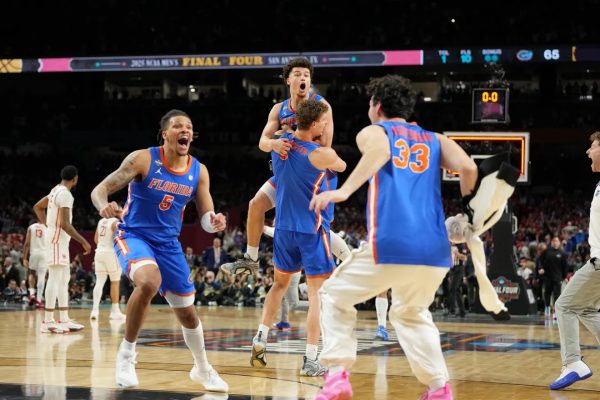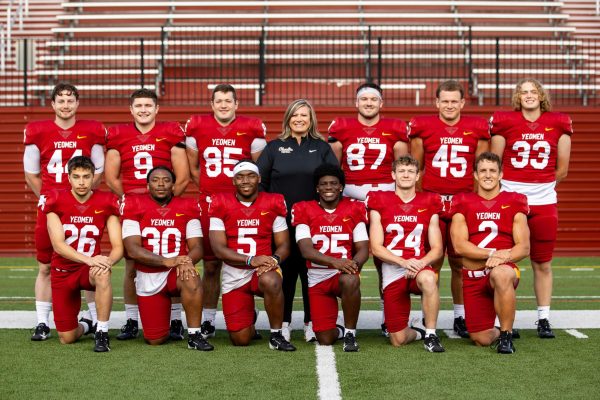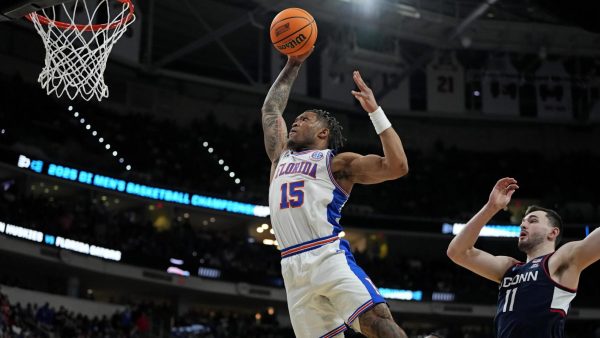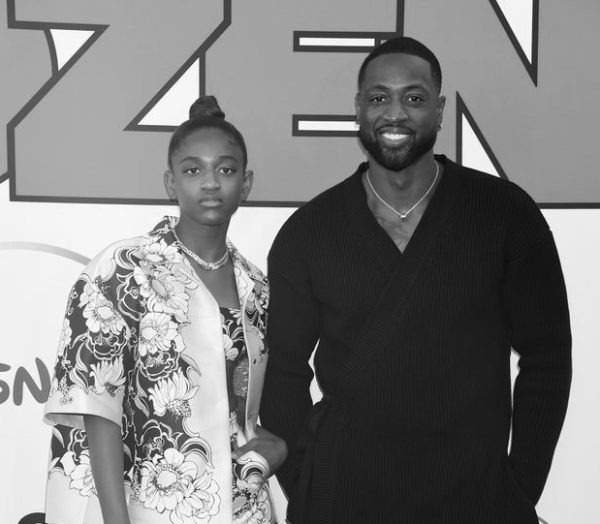Recruitment Brings a Variety of Athletes to Campus
For many high school students around the nation, applying to college is a tedious process that often begins their junior year. However, for student-athletes, the college search process can begin years in advance, with some students contacting coaches as early as middle school. Oberlin coaches typically begin looking at the performance of high school students in their sophomore or junior season. They search for individuals who will not only fit their program, but also thrive at Oberlin both socially and academically.
For Head Women’s Volleyball Coach Erica Rau, the character of the individual is at the forefront when she is evaluating potential recruits. She believes that skills can be improved, but the character of the student is innate.
“I look for good people that are academically driven and love volleyball,” she wrote in an email to the Review. “I want players on my team who are kind, self-motivated, respectful, responsible, and hardworking. Mechanics are much easier to teach than character.”
College third-year and men’s lacrosse player Alec Palmiotti was unsure if he would play lacrosse in college, but changed his mind after touring Oberlin and meeting with Head Men’s Lacrosse Coach Topher Grossman who provided support throughout the application process.
“I was really interested in Oberlin for a variety of reasons and I had been in contact with Coach Grossman, so I was able to set up a tour with him and have an interview with admissions,” Palmiotti said. “Coach Grossman said that he would support me through the application process and I could really see myself at Oberlin. I ended up applying Early Decision and stayed with lacrosse.”
Campus visits and fly-in programs play a crucial role in attracting potential recruits, serving as an opportunity to interact with the team and gain perspective on what it means to be a student-athlete at Oberlin. In particular, the Multicultural Visit Program offers students from underrepresented backgrounds the opportunity to visit Oberlin for free. This program works to provide a well-rounded experience for students to understand what it means to be not only an athlete at Oberlin, but also a member of the school culture as a whole.
In previous years such programs attracted some of the best athletes that the team has seen according to Associate Head Track and Field Coach and Recruiting Coordinator John Hepp, OC ’07.
“Some of the best athletes in the history of our program made their initial visit to Oberlin through the Multicultural Visit Program, including Monique Newton (OC ’18; 2-time national champion and 8-time All American) and Ana Richardson (OC ’18; 2-time All American and 4-time national qualifier),” Hepp wrote in an email to the Review. “Ana actually came back to Oberlin last summer to start working in our admissions office, where she now has the opportunity to provide the same sort of accessibility for students to come and experience Oberlin themselves through our various visit programs.”
Coach Hepp believes that while athletics are an important part of the Oberlin experience for student-athletes, there are many other communities and activities that students should be able to take advantage of.
“The most important thing to our coaching staff is that, first and foremost, we’re recruiting students that fit Oberlin College,” Hepp wrote. “We want students who are passionate about their interests, who have a natural, intellectual curiosity and want to be surrounded by other students who share that same love of learning, and who want to be part of a community that fosters critical thinking, challenges norms, and positively impacts the world around them. Their time as a student-athlete at Oberlin is going to supplement and augment their overall experience here, but it’s just one part of the greater experience they have over four years on campus.”
Current student-athletes also play an important role in the recruitment process. They are tasked with spending time with recruits and showing them the ins-and-outs of Oberlin, from attending activities around campus to team dinners and housing overnight visits. For Head Women’s Basketball Coach Stephany Dunmyer, the work of current student-athletes allows recruits to experience Oberlin culture and establishes a relationship between them and their potential teammates.
“[Current student-athletes] are tremendous,” she said. “They know what we’re trying to do as a program, they’re also looking for their next best friend, and they’re making sure it’s a good fit in all aspects. There’s no better recruiter than current students, in terms of just their experience here and being able to talk honestly about what they love about Oberlin and things that they would change if they could.”
It is this personalized attention during campus visits that attracted some student-athletes to Oberlin teams. College second-year Aesha Mokashi, who competes on the women’s track and field team, was interested in Oberlin as a place where she could pursue her interests in biology and theater while being an athlete.
“I visited through MVP and [coaches from the track and field team] made sure that I got a personal tour from one of the coaches,” she said. “The track team reached out and made sure that I met people from the team, for example I went to a team pasta dinner. And that was kind of it, I realized that this school wanted me, which was really nice.”
The process of finding Oberlin student-athletes is dependent on both potential students and coaches. Coaches work to find students who are a good fit for not only the team, but also Oberlin as a whole.
“It is all about finding the right fit on both ends,” said Rau. “Coaches want to find an athlete that will positively impact their team and the campus community, and potential student-athletes want to find a school and program where they will be happy and successful for the next four years. In the end, to be successful, both parties have to align.”







